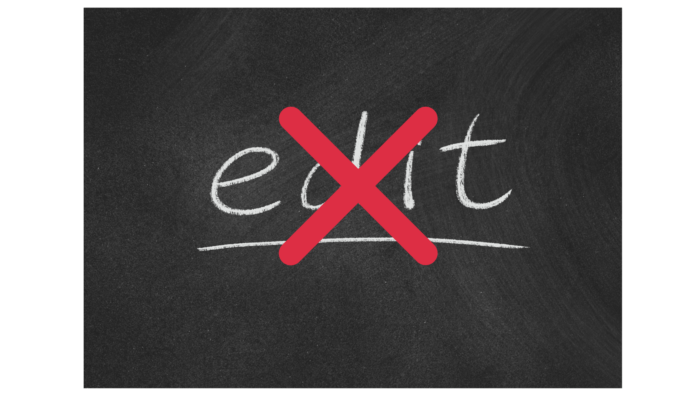Table of Contents
Amend Exemption in Reopened Bankruptcy? The Three Approaches
In a bankruptcy case where you already got the order of discharge and has been closed, can you go back and reopen the case to amend the exemptions to protect an asset? The answer is (say it with me): it depends.
The Scenario: Need to Reopen & and Amend Schedules
If you practice bankruptcy long enough, you know the situation. Debtor files bankruptcy, and somehow forgets that they had a cause of action and (potential) lawsuit against someone, and doesn’t disclose the potential asset.
Years later, defendant finds out about the bankruptcy, considers judicial estoppel, and for good measure, notifies the old bankruptcy trustee about the asset in the closed bankruptcy case.
Debtor then reopens the bankruptcy case, and amends the schedule of assets and exemptions and all is forgiven. No harm, no foul.
Of course, this can also happen when you want to avoid the lien of a home with no equity at the time of an old case, using Section 522(f). This would lead to the need to reopen and amend Schedule C with a de minimis amount to show that the lien is impairing an exemption. In re Higgins, 201 BR 965 (9th Cir BAP 1996)
The Problem: Can you Amend Exemptions after a Bankruptcy is Closed?
We start with one potential issue:Â Rule 1009(a) of the Federal Rules of Bankruptcy Procedures says when a case can be amended. “A voluntary petition, list, schedule, or statement may be amended by the debtor as a matter of course at any time before the case is closed.”
That seems pretty clear: you can amend at any time before the case is closed. There’s a very bright line.
So if the case is closed, everyone agrees that there’s no amending allowed, of anything. No amending closed cases.
But wait, there’s more.
Rule 9006 vs 1009 of the FRBP

Enter FRBP 9006(b). This rule says the court can extend certain deadlines and timeframes.
To be precise, Rule 9006(b) says: “Except as provided in paragraphs (2) and (3) of this subdivision, when an act is required or allowed to be done at or within a specified period by these rules or by a notice given thereunder or by order of court, the court for cause shown may at any time in its discretion (1) with or without motion or notice order the period enlarged if the request therefor is made before the expiration of the period originally prescribed or as extended by a previous order or (2) on motion made after the expiration of the specified period permit the act to be done where the failure to act was the result of excusable neglect.”
Or, to paraphrase, Rule 9006 about time enlargement says that a court can decide whether to extend a deadline, unless it’s prevented in 9006(b)(2). Guess what: Rule 1009 isn’t listed in 9006b2. This means that courts have discretion to enlarge or extend the time to amend the schedules for an asset or exemption, beyond the time the case is closed.
And the most natural time to do that would be after a motion to reopen the case.
But not all courts resolve the tension between Rules 1009 and 9006 in the same manner.
The Solution: The Three Court Approaches
Grappling with what appear to be inconsistent texts in the Bankruptcy Code, bankruptcy courts have settled upon three ways of approaching this particular conflict.
The Broad Approach
The broad approach allows debtors to amend the schedules in reopened cases without limitation. It is represented right here in the Ninth Circuit. Citing the US Supreme Court in White v. Stump, 266 U.S. 310, 313, (1924), and more locally, In re Chiu, 266 B.R. 743, 751 (9th Cir. BAP 2001), aff’d, 304 F.3d 905 (9th Cir.2002), the Bankruptcy Appellate Panel concluded that what controls is the well-established rule that the critical date for determining exemption rights is the petition date.
Section 350(b) of the US Bankruptcy Code allows reopening to “accord relief to the debtor.” It was specifically contemplated by Congress that reopening is to help debtors, and one way to provide relief to debtors is to allow them to utilize their right to exempt property.
On the day of filing, debtor’s rights to avoid a lien (or exempt an asset) were determined. The BAP continued: “If the drafters had intended to require court permission before the filing of amended schedules in reopened cases, they would have explicitly said so.” In re Goswami, 304 BR 386, 392 (9th Cir BAP, 2003).
“If the drafters had intended to require court permission before the filing of amended schedules in reopened cases, they would have explicitly said so.”
In short, in this approach, there is no difference between a never-closed case and a reopened case with respect to amended exemption claims. Id.
This was also implemented, though with a different rationale, recently by the Tenth Circuit BAP: “Since the reopening of a case is purely administrative, we cannot read Rule 1009(a)’s language to impose a substantive limitation on the debtors’ ability to amend their schedules as a matter of course. A reopening renders a case open. Rule 1009(a) contains no distinction between an original case and a case closed and then reopened.” Â In re Mendoza, 595 BR 849 (10th Cir BAP 2019).
The Narrow Approach
There are some cases that interpret Rule 1009 literally and strictly. They disallow all amendments in reopened cases.
An example is the court in In re Bartlett, 326 B.R. 436 (Bankr Ct, NDIN 2005), which ruled, “Rule 1009(a) requires amendments to the debtors’ schedules to be made before the case is closed. This case was closed on August 6, 2003. The court holds that it is not appropriate to allow the debtors to reopen this case in order to amend their claimed exemptions and such a post-closure amendment is of no effect.” Id. at 441.
The problem with this approach is it ignores Rule 9006 and the Supreme Court ruling in White v Strump.
Far as can be told, there are no Circuit Courts of Appeals or Bankruptcy Appellate Panels which have held this way.
The Middle Approach
A third way has emerged, which gives the courts some discretion and acknowledges the text in both Rules 1009 and 9006. This way allows amendments in reopened cases upon debtor’s motion, and when it is shown that the failure to amend before closure is the result of excusable neglect. In re Dollman, 582 BR 524 (Bankr Ct, NM 2018).
This approach integrates the “excusable neglect” standard from the U.S. Supreme Court in Pioneer, 507 U.S. 380 (1993), which specifically applied it to deadlines in Rule 9006.
However, it puts the burden of proof on the debtor. Rule 4003(c) provides “the objecting party has the burden of proving that the exemptions are not properly claimed.”
The Elephant in the Room: What about Law v Siegel
There’s one last wrinkle here, and that’s the US Supreme Court case of Law v Siegel, 571 U.S. 415 (2014). The US Supreme Court didn’t explicitly rule specifically on this point, but hinted around it with dicta and other conclusions of law.
What Law v Siegel Said
There, the Court said, “…[Section] 522 does not give courts discretion to grant or withhold exemptions based on whatever consideration they deem appropriate. A debtor need not invoke an exemption to which the statute entitles him; but if he does, the court may not refuse to honor the exemption absent a valid statutory basis for doing so.”
There it is. A court may not refuse to honor the exemption absent a valid statutory basis for doing so. Section 350 is a valid statutory basis that entitles the debtor to reopen a case. Amending exemptions provides the debtor relief. Per the SCOTUS, there is no statutory reason to deny it.
The Supreme Court in Siegel said, “[The trustee] points out that a handful of courts have claimed authority to disallow an exemption (or to bar a debtor from amending his schedules to claim an exemption, which is much the same thing) based on the debtor’s fraudulent concealment of the asset alleged to be exempt. He suggests that those decisions reflect a general, equitable power in bankruptcy courts to deny exemptions based on a debtor’s bad-faith conduct. For the reasons given, the Bankruptcy Code admits no such power.” Id. at 1196, emphasis added.
Dicta Doesn’t Resolve Split
While the above quoted and emphasized text is dicta and isn’t part of the Court’s holding and rule from Siegel — and thus doesn’t explicitly resolve the split in court’s interpretation of this issue — it signals that the US Supreme Court views amendment of schedules as an absolute right. Disallowing amendment upon reopening impinges upon that right, and in the Court’s words, “the Bankruptcy Code admits no such power.”
Note that there are some courts who feel that Law v Siegel doesn’t apply to this issue at all. To wit: “The holding in Law v. Siegel has limited application to the situation at hand… Notable for the purposes of this analysis is what Law v. Siegel did not address: 1) the meaning of the phrase “at any time before the case is closed” in Rule 1009; and 2) the application of Rule 9006 in reopened cases.” In re Benjamin, 580 BR 115 (Bankr. Ct, NJ 2018). So the Supreme Court’s dicta is ignored entirely.
Further, you have some courts who, after Law v Siegel, reject the Middle Approach and following the lead of Law v Siegel, see the Broad Approach as the only viable one. “This court acknowledges but rejects those decisions which have held that in a reopened case, debtors may amend their exemption schedule only upon a showing of excusable neglect sufficient to satisfy the requirements of Bankruptcy Rule 9006(b).” In re Muscato, 582 BR 599, 602 (Bankr. Ct, WDNY 2018).
And further: “Accordingly, this court believes that it is compelled to follow those cases which have held that “the debtor, under Rule 1009, may amend schedules without limitation of whether the case is open or reopened after closing.” Id.
This was echoed by the Sixth Circuit Court of Appeals when it ruled, “While the trustee attempts to argue that Siegel applies only to bankruptcy cases that have never been closed, we think that Siegel also applies in cases that have been reopened, like this one. ” In re Baker, 791 F. 3d 677, 683 (6th Cir 2015).
But it’s Dicta!
The Eighth Circuit BAP recently grappled with the weighty choice of whether to follow its own circuit precedent or Supreme Court dicta from Law v Siegel.
It ruled, “Like the bankruptcy court, we are thus placed in the unenviable position of having to determine whether the bankruptcy court was bound by the Supreme Court’s dicta in Law or by the Eighth Circuit Court of Appeals’ holding in Kaelin. At first blush, this might appear to be an easy decision. However, not all dicta are created equal.
‘This court and others have held that federal courts are bound by the Supreme Court’s considered dicta almost as firmly as by the Court’s outright holdings, particularly when … [the dicta] is of recent vintage and not enfeebled by any [later] statement.
‘Although panels have held that federal courts are bound by Supreme Court dicta, this goes too far. Appellate courts should afford deference and respect to Supreme Court dicta, particularly where, as here, it is consistent with longstanding Supreme Court precedent.’
Bearing these principles in mind, we conclude Kaelin has been abrogated by Law. Justice Scalia could not have been more clear: A bankruptcy court has no authority under federal law to deny an exemption on a ground not specified in the bankruptcy code. Whether Justice Scalia’s words are dicta or not, and if they are dicta, whether we are “bound” by them or are only required to afford them deference and respect, we cannot ignore the Supreme Court’s unambiguous statement of the law. In re Belew, 588 BR 875 (8th Cir BAP 2018), internal cites omitted.
Putting it all Together
Even after Law v Siegel, there’s a split of courts on whether Rule 1009 should be read strictly, some balance should be given to Rule 9006, or the right to amend is an absolute right at any time.
It seems the best approach is one that gives weight to Sections 350(b) and the spirit of Siegel (and White v Strump), sets debtor’s exemption rights at filing, and allow the amending of exemptions at any time to accord the debtor relief, even after reopening. Or in the words of the 10th Circuit BAP in Mendoza, “Rule 1009(a) contains no distinction between an original case and a case closed and then reopened.”
For all these reasons, while there’s disagreement (still!), the correct approach appears to be the one that acknowledges two Supreme Court cases, the clear words of Congress in the statute of Section 350(b), and FRBP 9006.





